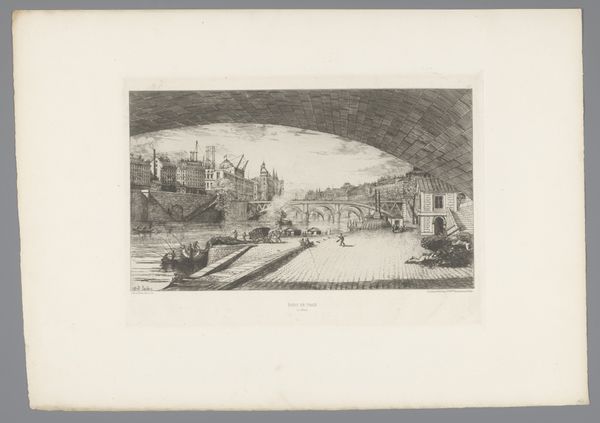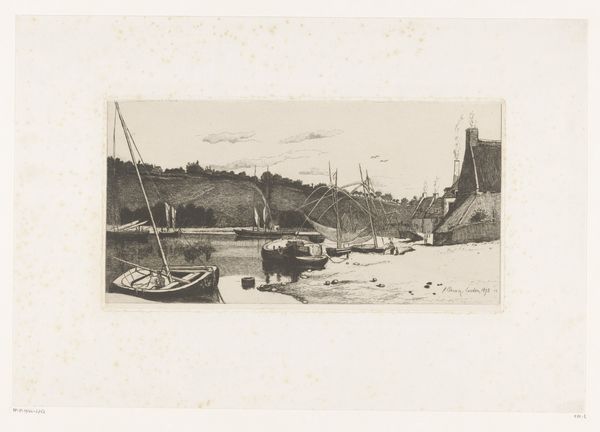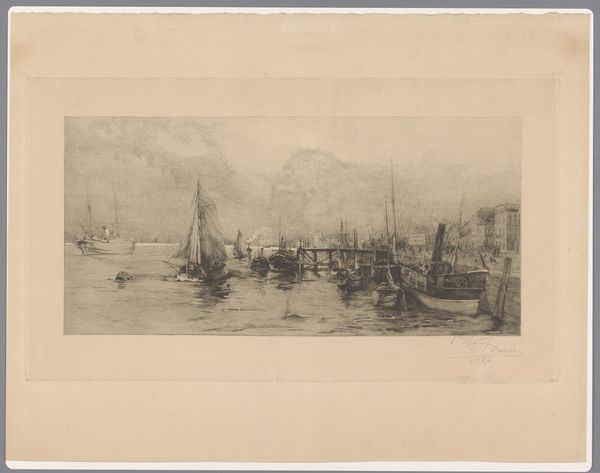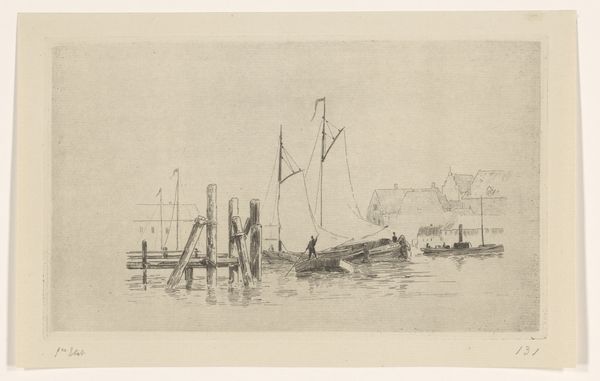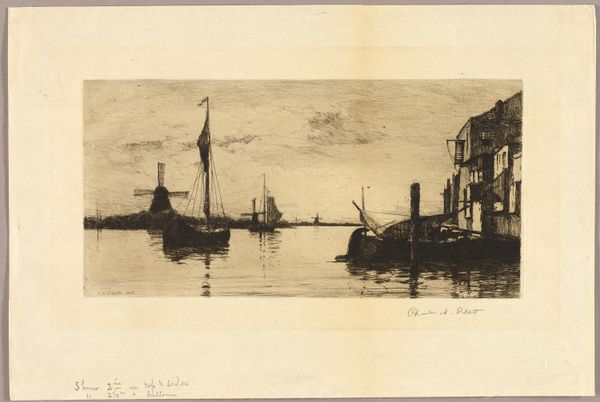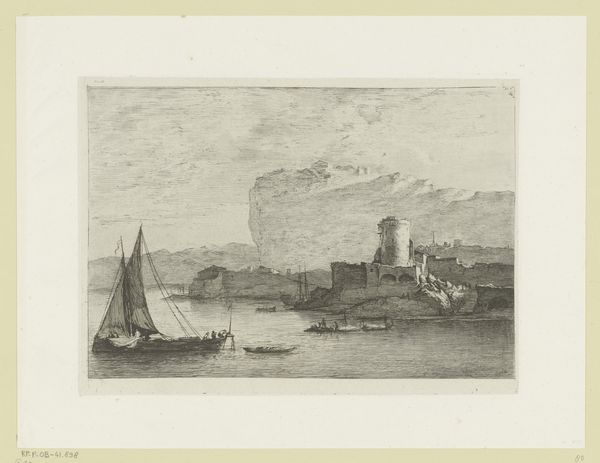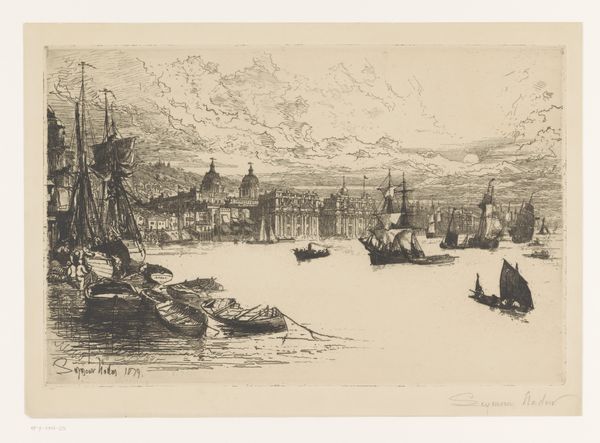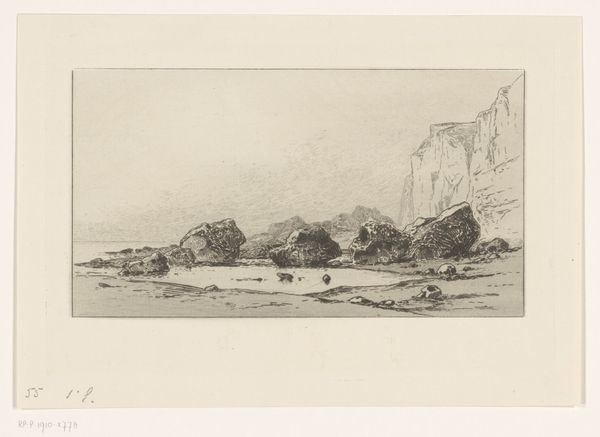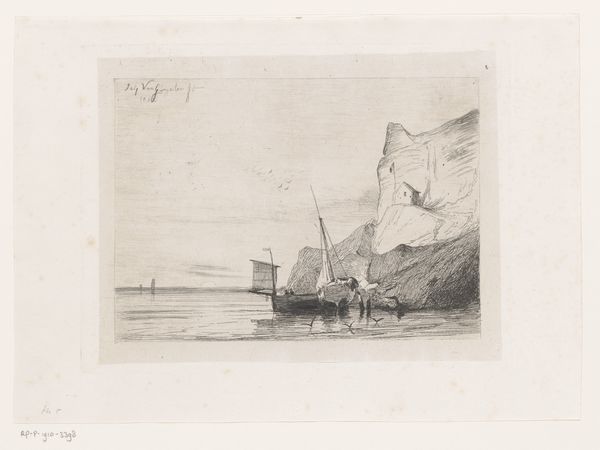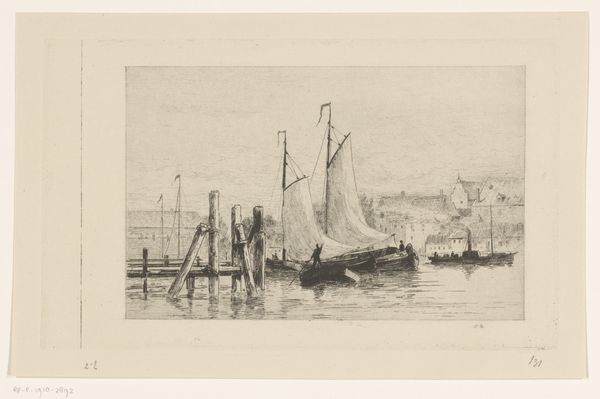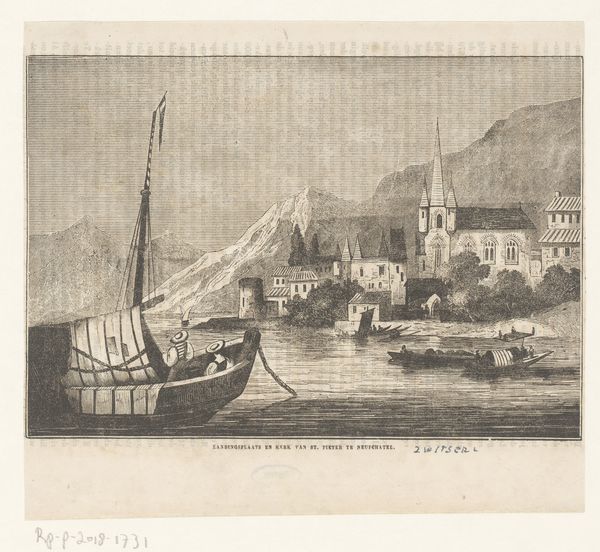
print, etching, paper
# print
#
impressionism
#
etching
#
landscape
#
paper
#
cityscape
#
monochrome
Dimensions: height 152 mm, width 236 mm
Copyright: Rijks Museum: Open Domain
Editor: This is Carel Nicolaas Storm van 's-Gravesande's "Havengezicht in Dieppe," from around 1873. It's an etching on paper, showing a harbor scene. I'm struck by the detail achieved in the monochrome print. What do you notice about the making of this work? Curator: The etching medium is central. Notice how the lines create form and shadow. The materiality of the zinc or copper plate—the physical act of incising it— dictated the final image. Think about the labor involved in creating such detail through repeated acid baths. Do you think this process influenced the way the scene itself is portrayed? Editor: It definitely makes me consider the repetition and craft of seafaring life itself – the routines of dock workers and sailors mirrored in the repetitive process of etching. It also seems like prints would be relatively cheap and easy to make - more affordable for the common man. Curator: Precisely. Prints democratize art by virtue of the reproducible and distribution possibilities inherent to them. Consider where such images might be consumed - perhaps as domestic decoration among a rising middle class. This disrupts older modes of elite art patronage. Is this then purely 'art' or could this also function as something closer to documentary? Editor: I hadn't considered that, but you're right. This print offers not just an aesthetic experience, but also provides visual evidence of labor and economic structures within the Dieppe harbor. The fact that these kinds of prints circulated might have changed people's perceptions of work. Curator: Exactly. It’s about shifting our perspective to include not just artistic intention, but the means of production, dissemination, and social reception. A good look at a supposedly aesthetic work will lead to material conditions. Editor: I never really thought of printmaking as having a strong relationship with work or political movements, but I see the connections so much clearer now. Thank you. Curator: A pleasure! Keep an eye for those material relationships.
Comments
No comments
Be the first to comment and join the conversation on the ultimate creative platform.

